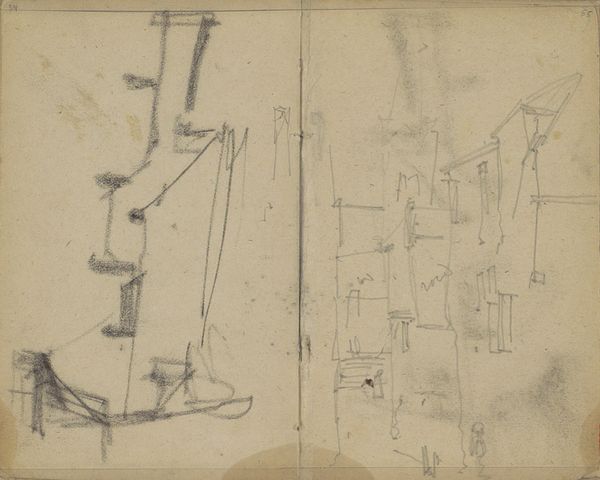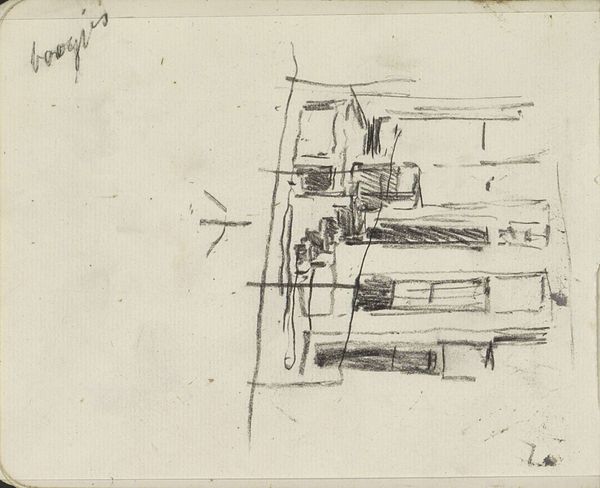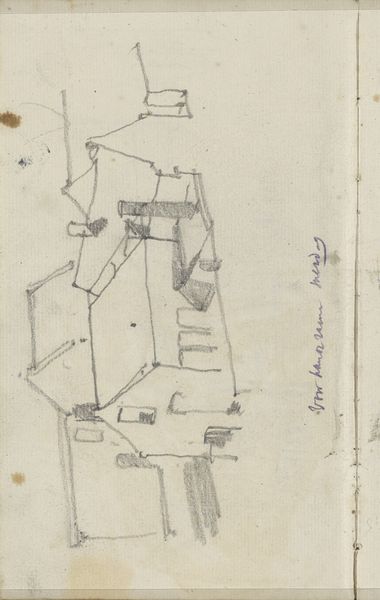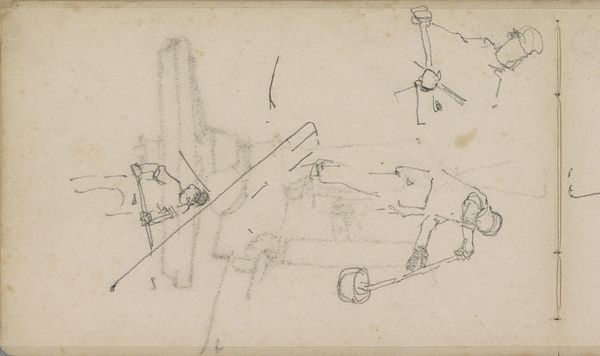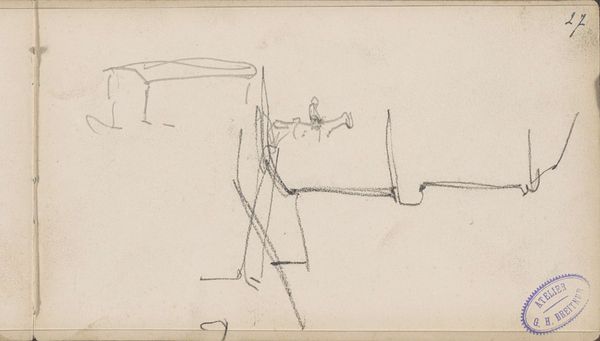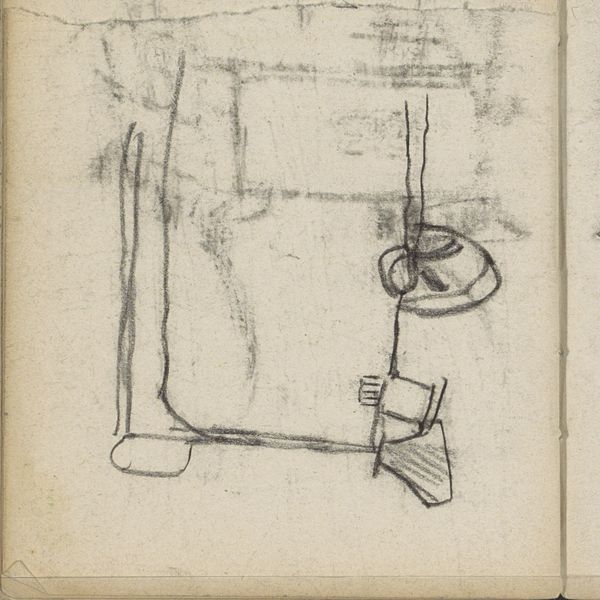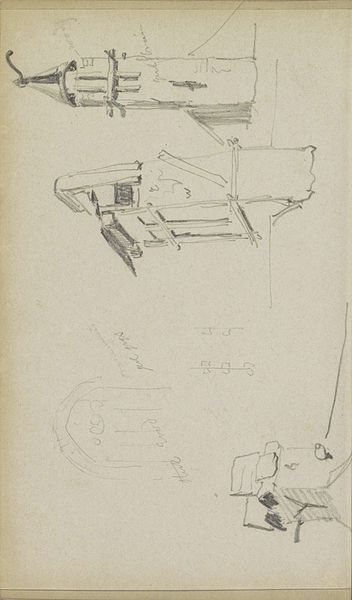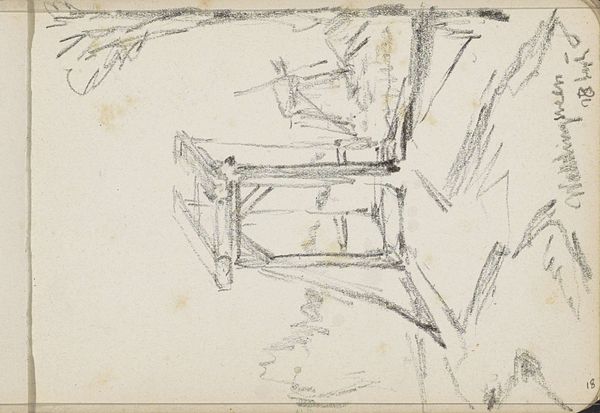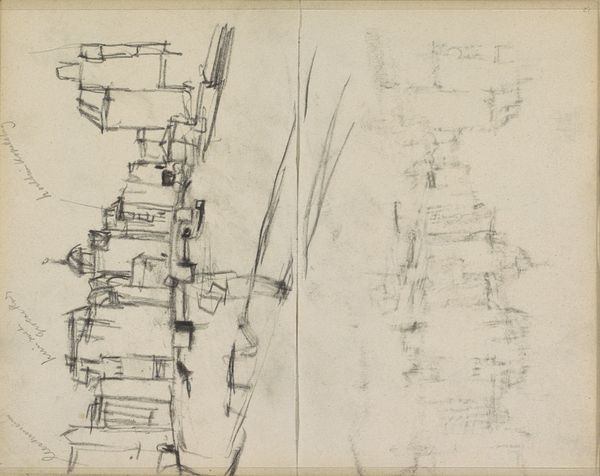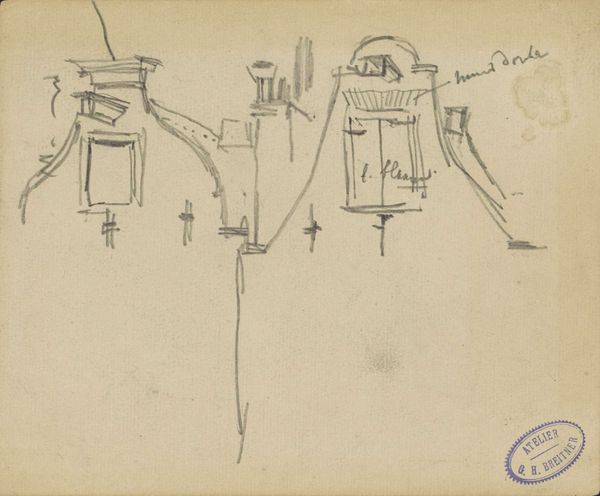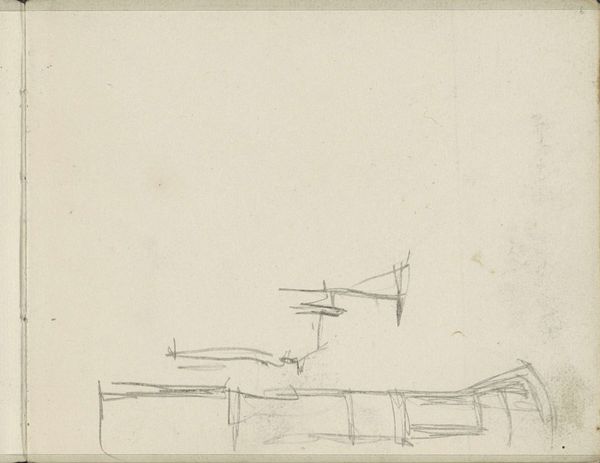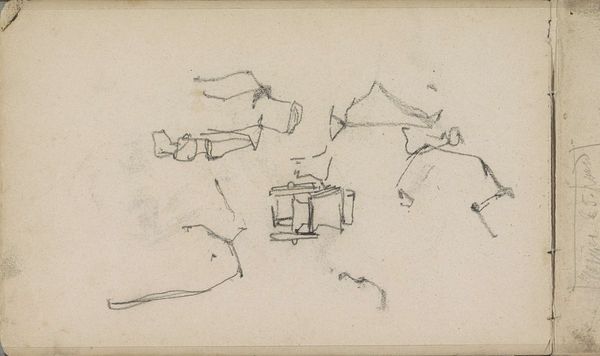
Staande vrouw en een onderstel van een kar of affuit 1880 - 1882
0:00
0:00
drawing, paper, pencil
#
drawing
#
dutch-golden-age
#
landscape
#
paper
#
pencil
#
realism
Copyright: Rijks Museum: Open Domain
Editor: This is "Standing Woman and Undercarriage of a Cart or Gun Carriage" drawn by George Hendrik Breitner between 1880 and 1882, a pencil drawing on paper. The loose sketchiness gives the drawing an unfinished quality. How might this piece reflect the artistic and social currents of its time? Curator: That's a great question. Consider Breitner’s context: late 19th-century Amsterdam. Urbanization, industrialization, and a changing social landscape. Although rather faint and quickly drawn, it reflects how he sought to capture the raw, unfiltered realities of modern life. How do you think Breitner’s choice of subject – the figure seemingly secondary to the cart – plays into that? Editor: I see what you mean. Maybe he’s emphasizing the gritty, working-class reality over idealized portraits. Is this focus a political statement, or just an observation? Curator: It’s a complex question. Realism, as a movement, aimed to depict life as it was, without romanticism. So, yes, there’s an element of social commentary in Breitner turning his attention to everyday scenes. Did museums or salons readily exhibit work like this at the time? Where were the usual display locations for artwork in this period, and did they ever overlap with art such as Breitner's? Editor: I suppose art in salons, was more geared towards the establishment. Perhaps a sketch like this, focusing on laborers, was viewed as less refined, perhaps exhibited in new art associations such as the Hollandsche Teekenmaatschappij. It sounds like artists like Breitner may have redefined whose lives were deemed worthy of artistic attention. Curator: Exactly! So we start seeing a shift in what's deemed “suitable” subject matter for art. Art became part of debates about social class and representation. And Breitner was right there in the middle of it. A powerful illustration of how art mirrors, and sometimes challenges, its historical moment. Editor: This makes me appreciate that a simple sketch like this can reflect larger cultural shifts and power dynamics. Thanks for pointing that out! Curator: And thank you, for your enthusiasm and insights! Thinking about the location and socio-political position in which this piece could be exhibited really provides valuable insight.
Comments
No comments
Be the first to comment and join the conversation on the ultimate creative platform.
